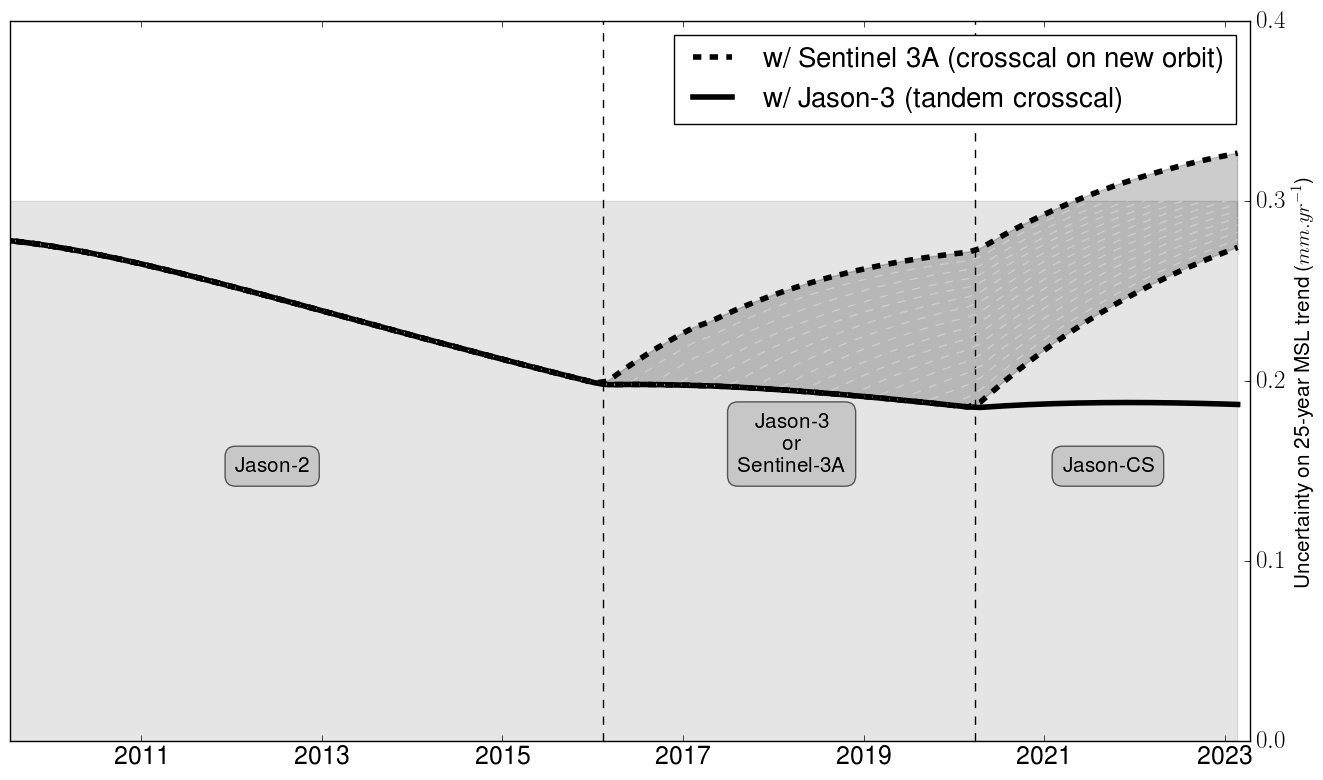Abstract's details
Continuing the Global Mean Sea Level reference record with Jason-CS / Sentinel-6
Event: 2017 Ocean Surface Topography Science Team Meeting
Session: Quantifying Errors and Uncertainties in Altimetry data
Presentation type: Poster
The current Mean Sea Level (MSL) continuous record, essential to understanding the climate evolution, is computed with the altimetric measurements of the TOPEX/Poseidon mission, succeeded by Jason-1, Jason-2 and since 2016, Jason-3. In order to extend the current MSL record, Jason-CS (Sentinel-6) will be the natural successor of Jason-3 in 2020: on the same orbit with a calibration phase.
(Zawadzki & Ablain 2016) demonstrated that the accurate continuity of the record is ensured by the conservation of the “historical” TOPEX orbit as well as by calibration phases between the successive missions. Indeed, these phases enable a rigorous estimation of the inter-mission relative biases with a 1mm uncertainty. It corresponds to a 0.15mm/yr uncertainty on a 10-year MSL record. In the absence of calibration phase, the relative bias uncertainty rises up to 2.5mm, corresponding to a 0.4mm/yr uncertainty. Compared to the 0.3mm/yr GCOS requirement, these uncertainties are very significant.
However, these uncertainties are obviously correlated with the method used to estimate the inter-mission relative bias.
The objective here is to develop a work plan in preparation to Jason-CS (Sentinel-6) launch. How can we improve the accuracy of the methods to estimate the relative biases? Would a multi-mission approach –using Jason-3 and Sentinel-3 (a/b) be accurate? What would be the MSL trend uncertainty induced by the premature loss of Jason-3?

(Zawadzki & Ablain 2016) demonstrated that the accurate continuity of the record is ensured by the conservation of the “historical” TOPEX orbit as well as by calibration phases between the successive missions. Indeed, these phases enable a rigorous estimation of the inter-mission relative biases with a 1mm uncertainty. It corresponds to a 0.15mm/yr uncertainty on a 10-year MSL record. In the absence of calibration phase, the relative bias uncertainty rises up to 2.5mm, corresponding to a 0.4mm/yr uncertainty. Compared to the 0.3mm/yr GCOS requirement, these uncertainties are very significant.
However, these uncertainties are obviously correlated with the method used to estimate the inter-mission relative bias.
The objective here is to develop a work plan in preparation to Jason-CS (Sentinel-6) launch. How can we improve the accuracy of the methods to estimate the relative biases? Would a multi-mission approach –using Jason-3 and Sentinel-3 (a/b) be accurate? What would be the MSL trend uncertainty induced by the premature loss of Jason-3?

Contribution: Poster_OSTST17_ContinuousMSLRecord.pdf (pdf, 1407 ko)
Back to the list of abstract